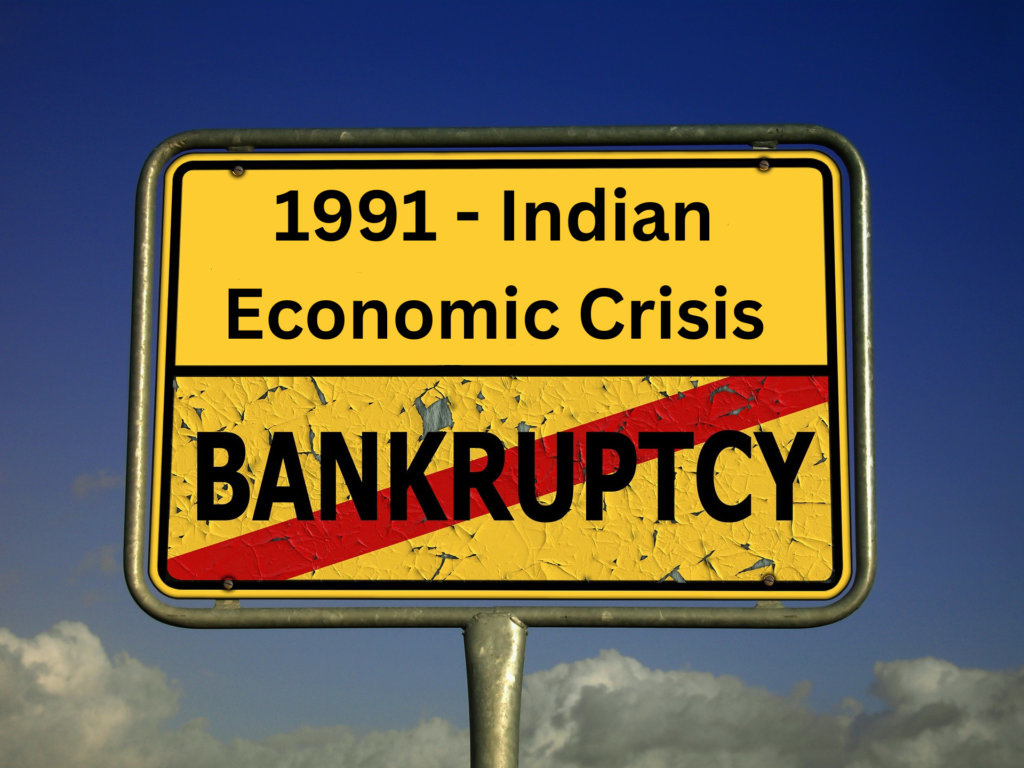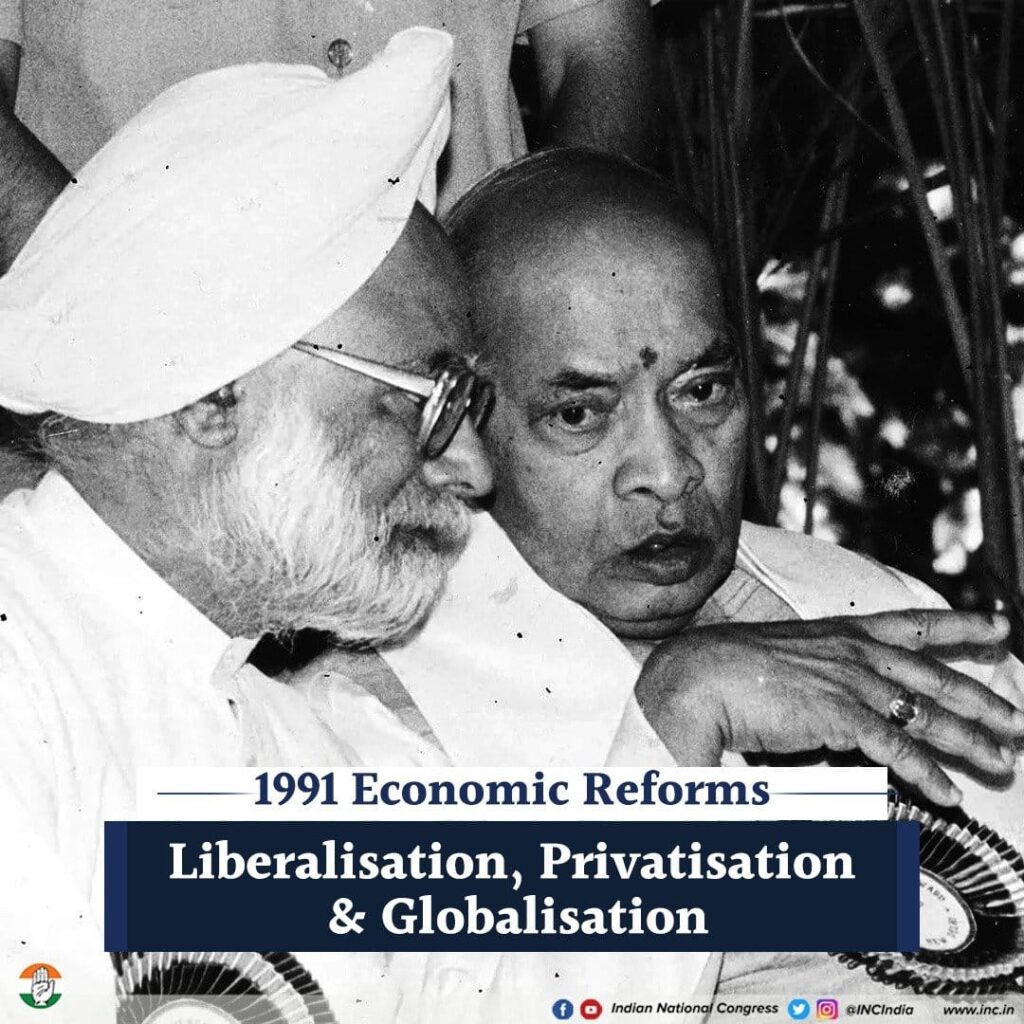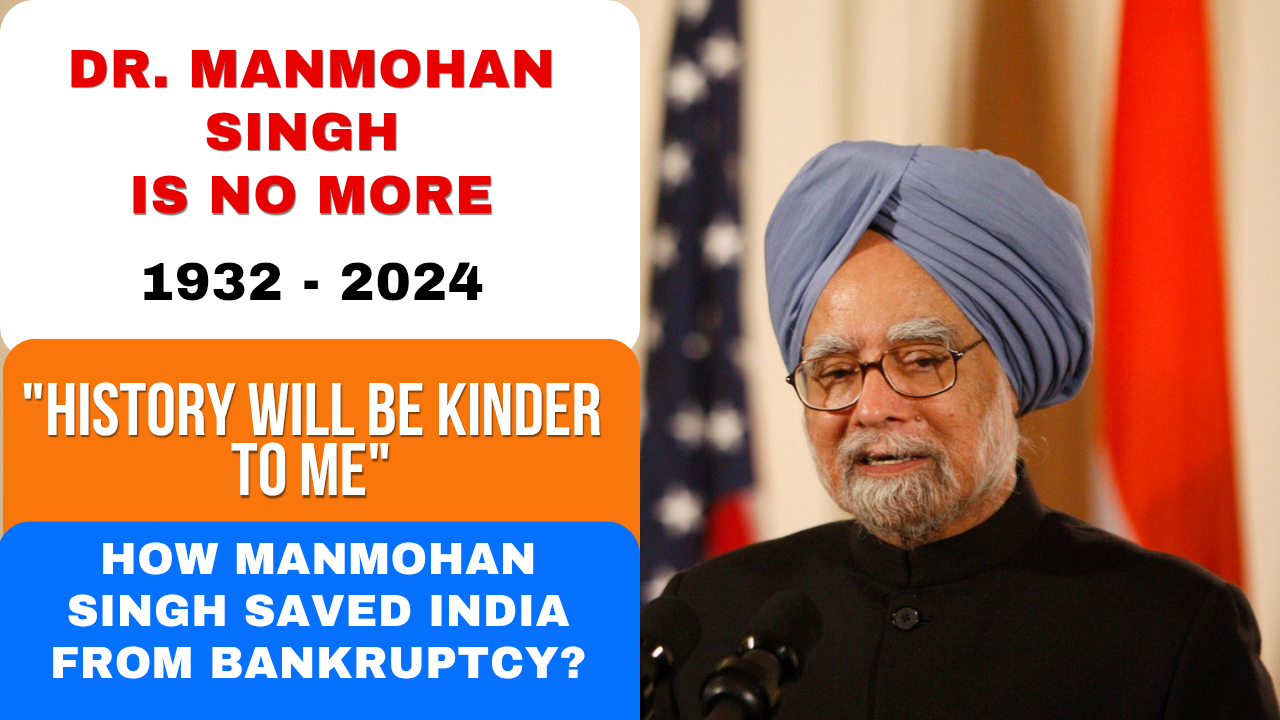Dr. Manmohan Singh: Architect of India’s Economic Reforms
Dr. Manmohan Singh, an eminent economist and visionary leader, has left an indelible mark on India’s economic landscape. Serving as the Finance Minister during one of the most challenging times in the nation’s history, he introduced transformative reforms that reshaped the Indian economy and set the stage for sustained growth. This article delves into the significance of Dr. Singh’s contributions, particularly during the economic crisis of 1991, and examines how his visionary policies continue to influence India’s development trajectory.
The Economic Crisis of 1991

In 1991, India faced an unprecedented economic crisis characterized by dwindling foreign exchange reserves, rising fiscal deficits, and soaring inflation. The country had barely enough foreign exchange reserves to sustain imports for two weeks. The global oil price shocks of the 1970s, coupled with domestic economic mismanagement, had exacerbated the situation.
Key Challenges:
- Depleting Foreign Exchange Reserves: India’s reserves fell to a precarious level, leaving the country on the brink of defaulting on its international obligations.
- High Fiscal Deficit: The fiscal deficit had ballooned to unsustainable levels, exceeding 8% of GDP.
- Double-Digit Inflation: Inflation soared to over 13%, eroding purchasing power and destabilizing the economy.
- Economic Isolation: The Indian economy was heavily regulated under the “License Raj,” which stifled innovation, discouraged private investment, and limited industrial growth.
Amid this crisis, the Government of India, under the leadership of Prime Minister P.V. Narasimha Rao, appointed Dr. Manmohan Singh as the Finance Minister. His appointment marked the beginning of a transformative era in India’s economic history.
Pioneering Economic Reforms

Dr. Manmohan Singh’s approach to addressing the economic crisis was bold, pragmatic, and forward-thinking. He introduced a series of structural reforms aimed at liberalizing the economy, attracting foreign investment, and fostering competition. These reforms laid the foundation for India’s transition from a closed, socialist economy to a vibrant, market-driven one.
Key Measures Implemented:
1. Abolition of the License Raj:
One of the most significant reforms was dismantling the complex system of industrial licensing, colloquially known as the “License Raj.” This system had created bureaucratic red tape, hindering entrepreneurial initiatives and industrial growth. By abolishing the License Raj, Dr. Singh opened up the economy to new ventures and innovations.
2. Foreign Exchange Management:
To stabilize the balance of payments, the Indian rupee was devalued twice in 1991. This move made Indian exports more competitive in global markets and helped attract foreign investment. Additionally, Dr. Singh eased restrictions on foreign direct investment (FDI), paving the way for global businesses to invest in India.
3. Trade Policy Reforms:
Tariff rates were significantly reduced, and quantitative restrictions on imports were lifted. These measures aimed to integrate India into the global economy by promoting trade and reducing reliance on protectionist policies.
4. Privatization and Disinvestment:
Public sector enterprises, which had long dominated the economy, were opened up to private participation. Dr. Singh initiated a disinvestment program to reduce the fiscal burden and improve the efficiency of public sector undertakings.
5. Taxation Reforms:
Dr. Singh rationalized the tax structure to make it more transparent and investor-friendly. Corporate tax rates were reduced, and efforts were made to broaden the tax base and simplify compliance procedures.
6. Promoting IT and Software Exports:
Recognizing the potential of the burgeoning IT industry, Dr. Singh introduced tax incentives for software exporters. This strategic move positioned India as a global IT hub, fostering the growth of companies like Infosys, Wipro, and TCS.
The Landmark Budget of 1991
Dr. Singh’s budget speech on July 24, 1991, is regarded as a historic moment in Indian economic history. In this speech, he outlined the government’s vision for economic reforms and set the tone for liberalization. His emphasis on deregulation, fiscal prudence, and globalization marked a radical departure from the protectionist policies of the past.
Notable Excerpts:
One of the most quoted lines from his speech was: “No power on Earth can stop an idea whose time has come.” This statement underscored his belief in the inevitability and necessity of reform.
Dr. Singh’s calm and confident demeanor during the budget presentation inspired trust among both domestic and international stakeholders. The speech not only outlined immediate corrective measures but also laid out a long-term vision for a modern and competitive Indian economy.
Impact of the Reforms
The economic reforms spearheaded by Dr. Manmohan Singh yielded transformative results, propelling India onto a trajectory of high growth and global integration.
1. Economic Growth:
India’s GDP growth rate, which had stagnated around 3-4% annually during the pre-reform period (often referred to as the “Hindu rate of growth”), surged to an average of 6-8% in the subsequent decades.
2. Foreign Investment:
FDI inflows increased exponentially, as India emerged as an attractive destination for global investors. This influx of capital spurred infrastructure development, job creation, and technological advancements.
3. Export Growth:
The devaluation of the rupee and export-friendly policies boosted India’s merchandise and services exports. Sectors such as textiles, pharmaceuticals, and IT services flourished in the global market.
4. Rise of the IT Sector:
The policy incentives for the IT and software industries laid the groundwork for India’s emergence as a global technology powerhouse. The sector now contributes significantly to GDP and provides millions of high-paying jobs.
5. Improved Fiscal Discipline:
Through privatization and fiscal consolidation measures, the government reduced fiscal deficits and stabilized the economy. The shift towards market-oriented policies improved resource allocation and efficiency.
Legacy of Dr. Manmohan Singh
Dr. Manmohan Singh’s tenure as Finance Minister is widely regarded as a turning point in India’s economic history. His leadership and vision not only rescued the nation from an economic crisis but also unlocked its immense potential for growth and innovation.
Key Achievements:
- Visionary Leadership: Dr. Singh’s ability to balance bold reforms with social and political sensitivities ensured the success of his initiatives.
- Global Recognition: He earned accolades from global leaders and institutions for his role in transforming India into a rapidly growing economy.
- Policy Continuity: The principles of liberalization, privatization, and globalization introduced by Dr. Singh continue to guide India’s economic policies.
Enduring Impact:
Even decades later, the reforms initiated in 1991 remain relevant. They have helped India weather subsequent economic challenges and maintain its position as one of the fastest-growing major economies in the world.
Conclusion
Dr. Manmohan Singh’s contributions as the architect of India’s economic reforms are unparalleled. His visionary policies not only stabilized the economy during a crisis but also laid the foundation for long-term growth and global competitiveness. Today, as India aspires to become a $5 trillion economy, the lessons from Dr. Singh’s reforms remain a guiding light. His legacy serves as a testament to the power of bold leadership and sound economic policymaking.

epdek6
**mind vault**
mind vault is a premium cognitive support formula created for adults 45+. It’s thoughtfully designed to help maintain clear thinking
**breathe**
breathe is a plant-powered tincture crafted to promote lung performance and enhance your breathing quality.